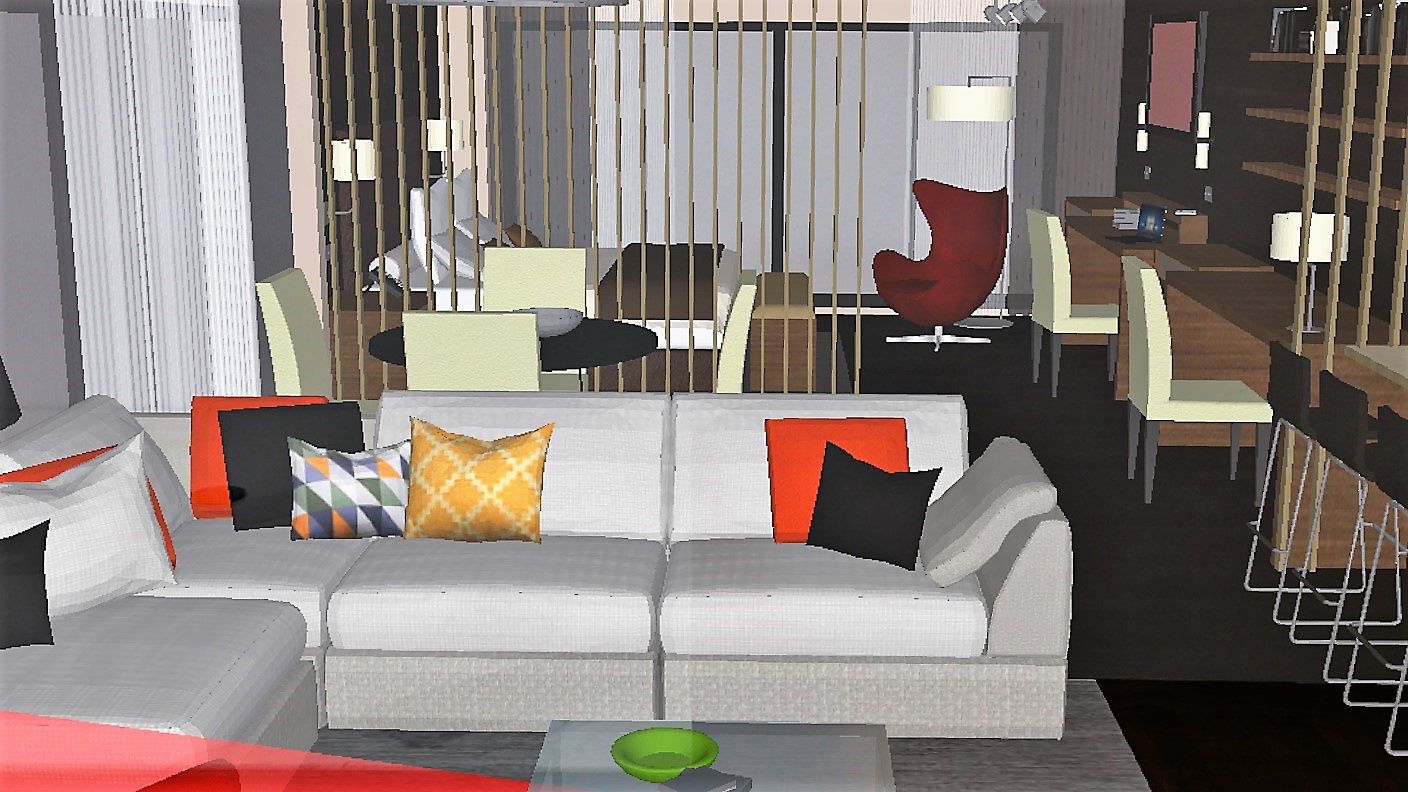This guy is using VR to turn a construction site into a finished home, his own
A home owner in Houston, TX is using a new tool to him see how his new home will look — in virtual reality
Larry Horning, founder of software company trend3r, taps into virtual reality to create the illusion of a finished product — from a new lawyer's office to a hotel suite. Clients have ranged from the Johnson Space Center to Houston's American Institute of Architects — with the latest, himself.
Horning recently walked Houston's ABC Eyewitness News through the construction site that will be his kitchen — taking a news crew through the details from a future wine bar to his inset virtual microwave oven.
Renderings are a standard part of any construction experience — clients expect to see not only blueprints, but depending on the budget, scaled models of new homes and spaces. Donning a VR headset? Not the norm. But perhaps it will be as VR and AR technology embeds deeper in the construction space.
VR and AR tools are slowly catching on in the consumer space. People can download apps, tap into their smartphones, and see a virtual Christmas tree in their living room, a new lamp in bedroom and and even a college acceptance letter in their hands. With a bit more investment — and the donning of a VR headset — they can immerse themselves fully in a virtual space. Even Airbnb is getting in on the act — looking to offer potential renters a chance to walk through a room before they book.
But in the business world, these virtual tools can enhance those who are tasked with imagining and building the future: architects and contractors. VR allows someone to actually walk through a new space — getting not just a sense of what a 20-story office building will look like or a new living room — but the ability to walk through and sense how tall those 12-foot ceilings actually are.
AR in particular is expected to grow faster in the commercial segment, according to research firm IDC.
"AR headsets are also on track to account for over $30 billion in revenue by 2021, almost twice that of VR, as most of the AR headsets will carry much higher average selling prices with earlier adopters being the commercial segment," says Jitesh Ubrani senior research analyst for IDC Mobile Device Trackers.
VR and AR Tools including IrisVR, Fuzor and of course Horning's own trend3r are wooing architectural firms and construction companies to enhance how they sell their own work to clients. That adoption dovetails the growth analysts expect will continue in coming years.
"As we head into 2018 we'll see additional new products appearing, including standalone headsets from major players, and we expect to see a growing number of companies embracing the technology to enable new business processes and training opportunities," says Tom Mainelli, IDC's vice president, Devices and AR/VR.
